Varia Sudafrica
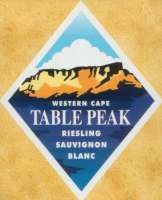 Una
tappa fondamentale è la divertente e bellissima città di
Cape Town. Soprannominata the Mother City, la città è
incastonata tra la Table Mountain (la cui caratteristica cima
piatta e levigata è famosa in tutto il mondo) e la baia, votata
tra le più affascinati del mondo, dove sorge l'isola di Robben
Island. Poco distante da Cape Town si estende, rigogliosa, la Wineland:
una visita a questa valle è quasi d'obbligo per assaggiare alcuni
dei meravigliosi vini sudafricani che stanno conquistando gli etnologi
di tutto il mondo! Qui le grandi case coloniali sono costruite in stile
Cape Dutch (la tipica architettura olandese con il tetto in paglia) ed
è qui che sorgono le pittoresche città di Stellenbosch e
Paarl. Spostandosi a sud di Cape Town si arriva a Cape of Good Hope
(Capo di Buona Speranza) con la sua riserva naturale che costituisce,
di per sé stessa, uno spettacolo unico. Proseguendo s'incontra
Boulder's Bay, un luogo incantevole abitato da migliaia di pinguini. Lungo
la costa i piccoli villaggi di pescatori proiettano i visitatori in un
mondo paradisiaco dove il tempo sembra essersi fermato, mentre percorrendo
la Garden Route, fino ad arrivare a Cape Agulhas, la
punta estrema dell'Africa, i turisti incontreranno spiagge inviolate che
si alternano a strutture in grado di offrire tutti i comfort possibili
e immaginabili. Se vi trovate a transitare lungo la costa tra giugno e
novembre non dimenticate di dare uno sguardo verso il mare: potreste avvistare
le balene che raggiungono questa zona dell'Oceano per partorire i loro
piccoli.
Una
tappa fondamentale è la divertente e bellissima città di
Cape Town. Soprannominata the Mother City, la città è
incastonata tra la Table Mountain (la cui caratteristica cima
piatta e levigata è famosa in tutto il mondo) e la baia, votata
tra le più affascinati del mondo, dove sorge l'isola di Robben
Island. Poco distante da Cape Town si estende, rigogliosa, la Wineland:
una visita a questa valle è quasi d'obbligo per assaggiare alcuni
dei meravigliosi vini sudafricani che stanno conquistando gli etnologi
di tutto il mondo! Qui le grandi case coloniali sono costruite in stile
Cape Dutch (la tipica architettura olandese con il tetto in paglia) ed
è qui che sorgono le pittoresche città di Stellenbosch e
Paarl. Spostandosi a sud di Cape Town si arriva a Cape of Good Hope
(Capo di Buona Speranza) con la sua riserva naturale che costituisce,
di per sé stessa, uno spettacolo unico. Proseguendo s'incontra
Boulder's Bay, un luogo incantevole abitato da migliaia di pinguini. Lungo
la costa i piccoli villaggi di pescatori proiettano i visitatori in un
mondo paradisiaco dove il tempo sembra essersi fermato, mentre percorrendo
la Garden Route, fino ad arrivare a Cape Agulhas, la
punta estrema dell'Africa, i turisti incontreranno spiagge inviolate che
si alternano a strutture in grado di offrire tutti i comfort possibili
e immaginabili. Se vi trovate a transitare lungo la costa tra giugno e
novembre non dimenticate di dare uno sguardo verso il mare: potreste avvistare
le balene che raggiungono questa zona dell'Oceano per partorire i loro
piccoli.
Mpumalanga , che significa “luogo
dove sorge il sole”, è una delle province del Sudafrica più
visitata dai turisti anche per l'incredibile contrasto di scenari che
offre a chi vi si reca: il panorama mozzafiato offerto dal Blyde River
Canyon e lo spettacolo unico costituito dal Kruger National Park,
immagine stessa del Sudafrica, con i suoi animali e la sua flora incontaminata
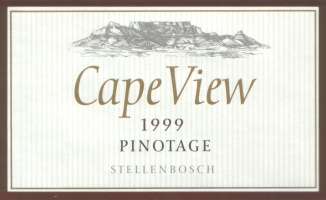 Il Sudafrica si divide in 3 aree principali:
Il Sudafrica si divide in 3 aree principali:
• l'immensa zona interna dominata dall'Altopiano (High Veld) e dalle
Drakensberg Mountain.
• il bacino del Kalahari
• la zona costiera che incornicia il paese affacciandosi ad Ovest
sull'Oceano Atlantico e ad Est sull'Oceano Indiano.
Per avere un'idea delle sue reali dimensioni (1.300.000
Kmq. di cui 3000 km di costa) basti pensare che il Sudafrica ha un'estensione
pari alla Germania, alla Francia e all'Italia messe insieme.
Posizionato immediatamente a sud del Tropico del Capricorno, il Sudafrica
occupa solo il 4% dell'intero continente africano.
Gli Stati confinanti, procedendo da Est verso Ovest, sono la Namibia, il Botswana, lo Zimbawe e il Mozambico, mentre le coste si affacciano su 2 oceani, l'Indiano e l'Atlantico.
Le Protee sono fiori nazionale del Sud Africa.
Le Protacee presentano fiori con varietà di forme uniche al mondo,
ed un particolarissimo sistema di impollinazione. Nel 1896 in Sud-Africa
la Protea veniva stampata su francobolli, impressa su monete e dichiarata
Pianta dell’anno.
Contrary to popular belief, Cape Agulhas (not Cape Point) is the southernmost tip of Africa as determined by the International Hydrographic Organization.
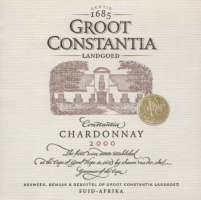 The
southernmost tip is situated 1km west of Cape Agulhas Lighthouse and a
small plaque marks the position. The warm Agulhas Current and the cold
Benguela Current meet somewhere between Cape Agulhas and Cape Point but
the position is never constant. The name Cape Agulhas comes from the Portuguese
word for "needles" after the early Portuguese explorers discovered
that their compass needle showed no deviation. The
seas around Cape Agulhas are very treacherous and have caused numerous
shipwrecks and the Cape Agulhas Lighthouse was built in 1848 to help reduce
the fatalities.
The
southernmost tip is situated 1km west of Cape Agulhas Lighthouse and a
small plaque marks the position. The warm Agulhas Current and the cold
Benguela Current meet somewhere between Cape Agulhas and Cape Point but
the position is never constant. The name Cape Agulhas comes from the Portuguese
word for "needles" after the early Portuguese explorers discovered
that their compass needle showed no deviation. The
seas around Cape Agulhas are very treacherous and have caused numerous
shipwrecks and the Cape Agulhas Lighthouse was built in 1848 to help reduce
the fatalities.
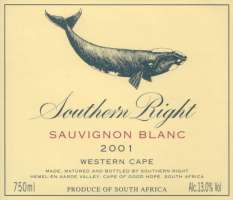 It
is the 2nd oldest working lighthouse in South Africa and was declared
a national monument in 1973. The ceremonial first lighting took place
on 1 March 1849.
It
is the 2nd oldest working lighthouse in South Africa and was declared
a national monument in 1973. The ceremonial first lighting took place
on 1 March 1849.
The architecture is inspired by the style of the original
Pharos Lighthouse at Alexandria. Unfortunately inferior limestone was
used and by 1968 an aluminium support structure had to be erected because
the tower was no longer sturdy. Restoration began in 1983 and in 1988
the lighthouse re-opened. Visitors who climb the
narrows steps to the top of the tower are rewarded with a panoramic view
of the ocean. The Cape Agulhas Lighthouse houses
the only lighthouse museum in Africa. There are photographs of all 56
South African lighthouses and interesting information about lighthouses
and their history. The Cape Agulhas Lighthouse
celebrated its 150th anniversary on 1 March 1999. To coincide with the
celebrations the Agulhas National Park was opened.
 Stellenbosch
is the second oldest town in South Africa and every effort has been made
to preserve the atmosphere of I9th century calm and elegance. Nowhere
is this more evident than in Dorp Street with its charming, thatched,
white houses with green shutters and elegant fanlights. The town is also
known for its stately oaks and gracefully proportioned Cape Dutch homesteads.
Stellenbosch
is the second oldest town in South Africa and every effort has been made
to preserve the atmosphere of I9th century calm and elegance. Nowhere
is this more evident than in Dorp Street with its charming, thatched,
white houses with green shutters and elegant fanlights. The town is also
known for its stately oaks and gracefully proportioned Cape Dutch homesteads.
The Stellenbosch Wine Route was the first in South Africa and all the
estates along the route are within a 12km radius of the town. All are
open Monday to Saturday with only a few opening on Sundays. They offer
wine tastings and sell directly to the public and a number of the estates
offer light meals but it would be advisable to make enquiries before you
arrive.
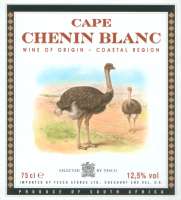
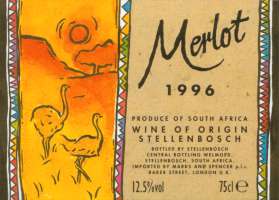 Oudtshoorn,
the world's ostrich capital.
Oudtshoorn,
the world's ostrich capital.
Commercial ostrich farming started during the late 1880's in South Africa,
this was also the start of the ostrich industry worldwide. The fashion
demand in Europe for ostrich feathers inspired the growth of the industry,
with the Oudtshoorn district quickly being established as the Ostrich
capital of the world. During the first decade of the previous century,
ostrich feathers gained record prices on foreign markets, ranking 4th
on the list of South African exports, after gold, diamonds and wool.
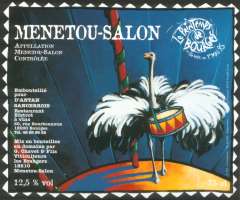 The visitors will see large flocks of ostriches at different stages of
development in the surrounding fields. You can see the breeding camp,
with a nest of ostrich eggs, where the first stage of the ostrich life
cycle is explained. Visitors will get the opportunity to test the strength
of the eggs by standing on them. During the breeding season visitors get
to see ostrich eggs hatching in the incubator rooms.
The visitors will see large flocks of ostriches at different stages of
development in the surrounding fields. You can see the breeding camp,
with a nest of ostrich eggs, where the first stage of the ostrich life
cycle is explained. Visitors will get the opportunity to test the strength
of the eggs by standing on them. During the breeding season visitors get
to see ostrich eggs hatching in the incubator rooms.
The Cango caves are a place
of great natural beauty and a national monument. One of the world’s
great natural wonders, sculptured by nature through the ages. Mysterious
and breath-taking limestone formations in a wide variety of natural
colours.
The temperature in the caves is a warm and humid 18°C.
The cave extends for 5.3km, in a series of large spherical chambers
connected linearly by low passages and crawls. For more than 20 million
years, rainwater has flowed through fissures and seeped through cracks
in the earth's face, scouring and dissolving rock and limestone to form
the vast halls and tunnels of the Cango Cave system.
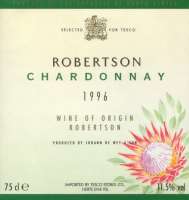 South
Africa's Garden Route
South
Africa's Garden Route
The coastal stretch at the Indian Ocean covers the area of the Tsitsikama
Forest- and Coastal Nature Reserve with Storm River Mouth, the villages
of Nature's Valley, Plettenberg Bay, Knysna, Sedgefield, Wilderness
and George and behind the mountain range the fruit farming area at the
Langkloof and the town of Oudtshoorn with surrounding Ostrich Farms.
Other tourist attractions nearby are the vast limestone Cango Caves
and a drive over the scenic
Swartberg Pass.
© All rights reserved. The Wine Labels World.